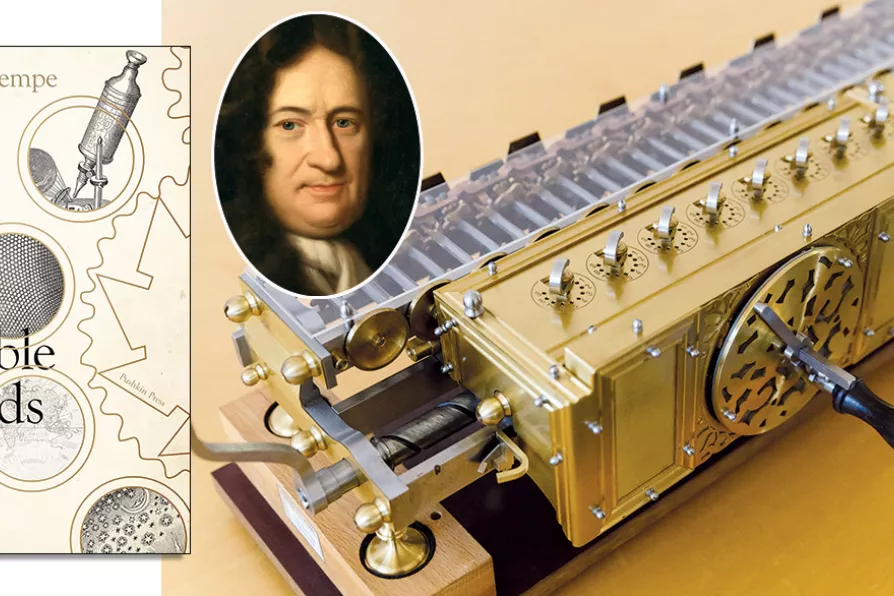RICHARD MURGATROYD enjoys a readable account of the life and meditations of one of the few Roman emperors with a good reputation

 MECHANICAL SHORTCUTS TO FUTURE: The Stepped Reckoner, a mechanical calculator invented by German mathematician Gottfried Wilhelm Leibniz in 1674 and completed in 1694. About 67 cm this was the first calculating machine able to do all four arithmetic operations: addition, subtraction, multiplication, and division
[Hermann Julius Meyer/Public domain; Gottfried Leibniz (c1695) by Christoph Bernhard Francke]
MECHANICAL SHORTCUTS TO FUTURE: The Stepped Reckoner, a mechanical calculator invented by German mathematician Gottfried Wilhelm Leibniz in 1674 and completed in 1694. About 67 cm this was the first calculating machine able to do all four arithmetic operations: addition, subtraction, multiplication, and division
[Hermann Julius Meyer/Public domain; Gottfried Leibniz (c1695) by Christoph Bernhard Francke]
The Best of all Possible Worlds: A Life of Leibniz in Seven Pivotal Days
Michael Kempe, Pushkin Press, £20
MICHAEL KEMPE, director of the Leibniz Archive in Hanover, has written an enthralling biography of Gottfried Wilhelm Leibniz. It is not a conventional biography. Instead Kempe presents a series of snapshots of significant days in Leibniz’s life, vivid pictures of how he lived and worked in Paris, Zellerfeld, Hanover, Berlin and Vienna.
Leibniz was one of the last representatives of a type of universal scientist, with the 17th century scientific revolution’s optimistic trust in progress, and also with the hope, dating back to the Renaissance, of being able to lay claim to all the world’s knowledge. In his amazingly productive life, Leibniz indeed made major contributions across a huge range of disciplines.

ANDY HEDGECOCK relishes an exuberant blend of emotion and analysis that captures the politics and contrarian nature of the French composer

ANDY HEDGECOCK admires a critique of the penetration of our lives by digital media, but is disappointed that the underlying cause is avoided












